1. Shaping: steering the goals, structures and activities of an orchestrator’s intermediaries to keep them in line with its own goals and priorities
1.1. The attributes of the orchestrator and its relationships with intermediaries, especially the forms and levels of support it offers, may give it a modest degree of leverage to shape individual intermediaries and steer their activities.
1.2. When and where are shaping and steering used?
1.2.1. Shaping and steering are especially significant for governmental orchestrators like UNEP and DFID, which must ensure that publicly-adopted mandates and norms are observed.
1.2.2. They can also be used to promote goals such as the inclusion of developing country actors or other key stakeholders, or the adoption of more democratic or efficient internal procedures.
1.3. What shaping techniques are available?
1.3.1. As part of catalyzing new intermediaries, orchestrators can choose whom to include in an initiative, and whom not to invite; for example, only certain organizations were asked to participate in framing EITI
1.3.2. Orchestrators can provide information and guide deliberations on organizational form, standards and activities, as the IFC did with deliberations on the Equator Principles.
1.3.3. Orchestrators can "incentivize" appropriate intermediaries.
1.3.3.1. Orchestrators create positive incentives by directing support to desired actions or making support conditional on those actions.
1.3.3.2. They provide negative incentives by implicitly or explicitly threatening to terminate support if an intermediary strays from its commitments. For example, the World Bank provided technical assistance to oil companies only for gas conversion projects.
1.3.4. Orchestrators can single out certain organizations for endorsement.
1.3.4.1. This approach strengthens the selected organizations vis-à-vis less representative, effective or ambitious competitors in the same issue space.
1.3.4.1.1. For example, the UN and the 2002 World Summit on Sustainable Development gave such broad support to GRI that they established its reporting protocols as the de facto global standard.
1.3.4.2. Ideally, especially when decisions are based on explicit criteria, the possibility of receiving a valuable endorsement or other support will set off a “race to the top,” with organizations competing for recognition.
1.3.5. Orchestrators can shape complexes of institutions.
1.3.5.1. Here the most important tools of steering include agenda setting, information sharing, guidance and coordination, although the positive and negative incentives of support are also relevant.
1.3.5.2. An area ripe for shaping of this kind is the world of voluntary transnational governance initiatives.
1.3.5.2.1. In many issue areas, multiple transnational organizations compete with each other.
1.3.5.2.2. Such fragmentation is often sub-optimal, because it confuses consumers (who are unable to distinguish between competing schemes), burdens producers, and consumes excessive organizational resources.
1.3.5.2.3. By strategically supporting better-governed and more effective schemes, orchestrators could significantly enhance transnational governance.
1.3.5.2.4. Similarly, sustainable development governance has in recent years focused on encouraging voluntary partnerships and commitments from non-state actors and organizations. Hundreds of these initiatives have been created. Orchestration is sorely needed to encourage good internal governance and effective programs, coordinate dispersed actions and increase accountability.
2. Initiating: enlisting appropriate intermediaries
2.1. Initiating is by far the most common strategy...
2.2. If appropriate intermediaries exist…
2.2.1. the orchestrator can enlist those organizations to collaborate through persuasion and by offering support.
2.3. If they don’t exist…
2.3.1. the orchestrator may play a catalytic role in creating new ones.
2.3.2. How?
2.3.2.1. by using the “convening power” that its focality and legitimacy provide to bring together the actors it hopes will participate, to encourage them to collaborate in an organized way, and to guide their interactions
3. Supporting: strengthening the governance impact of intermediaries
3.1. Once appropriate intermediaries have been identified or created, the orchestrator strengthens their governance impact by providing support.
3.2. Material support
3.2.1. Financial contributions Administrative assistance Hosting of staff
3.2.2. These strengthen intermediaries’ operational capacities.
3.3. Subjective support
3.3.1. Examples: technical expertise, access to information, access to other influential actors, a clear agenda, and political or legal endorsement.
3.3.2. These enhance intermediaries’ visibility, legitimacy and reputation, and also strengthen their capacities.
4. Orchestrators must also be able to identify (or help create) intermediaries that...
4.1. If orchestration is governance through intermediaries, suitable intermediaries must be available for orchestration to succeed.
4.2. are capable of addressing the issue at hand
4.3. possess capacities that complement the orchestrator’s
4.4. have goals that are well aligned with those of the orchestrator
5. Orchestrators must possess at least some of the following characteristics:
5.1. In general, orchestrators possessing more of these characteristics are more likely to succeed, though the relative importance of each attribute will vary across contexts.
5.2. Legitimacy
5.2.1. Definition: the belief amongst intermediaries and targets that an orchestrating organization is appropriate to direct policy on a given issue
5.2.2. Three (3) important sources of legitimacy
5.2.2.1. the moral authority of the orchestrator
5.2.2.2. the expertise of the orchestrator
5.2.2.3. the orchestrator’s track record of success
5.3. Focality
5.3.1. Definition: the ability to reach out to a range of relevant actors with a reasonable expectation that they will respond
5.3.2. What characteristics determine an institution’s focality?
5.3.2.1. Focal institutions are the hubs that actors look to and converge around in a particular issue area, or within a certain network.
5.3.2.2. Focal actors have strong connections with the many other organizations working in an issue area.
5.4. Material or subjective resources
5.4.1. Definition: positive incentives orchestrators can offer to potential intermediaries as support
5.4.2. Kinds
5.4.2.1. Money Technical support Administrative support Non-material (e.g., reputational) support
5.5. Supportive culture
5.5.1. Definition: organizational conditions geared toward collaborative, indirect governance
5.5.2. Successful orchestrators…
5.5.2.1. habitually interact with actual and potential partners outside the organization
5.5.2.2. seek innovative strategies to confront existing and emerging problems
5.5.2.3. are willing and able to engage with sub-state and non-state actors
